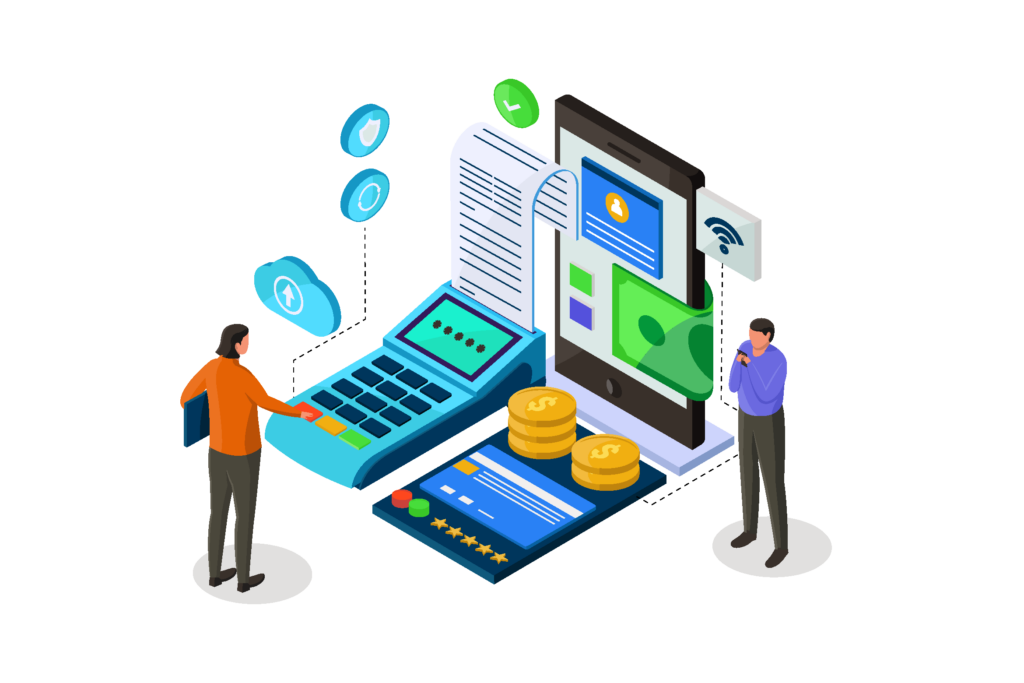This article was written by Nick Gausling, former Cansultant.

Retail payments have changed a lot since COVID. While cash had already been declining for decades with the rise of consumer credit cards, post-COVID it’s no longer even accepted at many businesses. For good or ill, we are increasingly moving towards a cashless society.
There are certainly advantages to accepting cash, such as no merchant transaction fees and not having to deal with unjustified charge backs or fraudulent purchases on stolen card numbers. But cash also carries plenty of its own risks such as bad accounting controls, theft, destruction, counterfeit bills, labor cost to make bank deposits, manual reconciliations, and more.
Whether or not it makes sense for your business to still accept cash in 2023 really comes down to a cost-benefit analysis: how much of your total sales represents customers who pay in cash (and would you lose them if you didn’t accept it), how much would you have to pay in merchant fees if they used cards instead, and what other expenses go into your cash-handling protocols? Laundromats, street or farmers’ market vendors, and F&B retailers like food trucks and bars will likely have a harder time trying to phase out cash than most other types of businesses.
But the real question is should you be adding payment options, particularly future-oriented ones? Adding new payment systems increases the complexity of your operations, but can have a lot of upside like reaching new customers, lowering checkout cycle times, and decreasing fraud. Let’s talk about two next-generation payment systems that you could deploy.
Mobile Payments via a Third-Party Digital Wallet
The three most important mobile payment solutions are Apple Pay, Google Pay, and Samsung Pay, which are default integrated by their respective hardware vendors. While not actually a new technology, it has only started to become mainstream over the last few years. These solutions use special chips in modern smart phones called near-field communication (NFC) technology which allows customers to pay by holding their phone close to a compatible payment reader.
Customer credit and debit card information is stored encrypted in a mobile wallet connected securely to the issuing bank so that your customer can easily pay without needing to pull out a physical card. These technologies also secure information even better than the chip method; not only is the card number anonymized through tokenization (as in chips), but even the customer’s name is generally shielded from the point-of-sale system. You can also leverage in-store QR codes to quickly facilitate a mobile payment through Apple Pay, Google Pay, or Samsung Pay.
You’ll still be incurring merchant fees and potential charge backs because ultimately these are credit and debit-based transactions simply facilitated by the digital wallet, but the risk of identity fraud or customer data breach is significantly lower, and the convenience benefit to your customer is often perceived as substantial. In addition, Apple Maps and Google Maps will positively notate your business as accepting mobile payments. And did I mention that these systems tend to move significantly faster than magnetic strips or chips? In a high-velocity environment (like a popular restaurant during lunch or a retailer on Black Friday) that can be a game-changer.
While primarily a brick & mortar solution, these mobile payment systems can also be incorporated into e-commerce through in-app purchases or your website’s own payment portal.
Cryptocurrency
2022 was not a great year for cryptocurrency markets, but you would be remiss to think it’s going away. This is a field that is just now emerging from infancy and there’s a lot of changes that are still happening and will continue to happen for decades to come, revolutionizing many parts of industry.
You don’t need to be an investor in any cryptocurrencies to leverage them for your business. There is a growing, loyal minority of consumers who prefer to pay with cryptocurrency and will stick with brands that make that an option over those that don’t. You can often generate positive press and attract new types of customers simply by making cryptocurrency a known payment option at your business.
The most popular cryptocurrencies for making retail payments are Bitcoin, Ether (Ethereum), and Litecoin. These are also some of the oldest and most reputable coins that have shaped the whole industry. Businesses could set up and directly manage their cryptocurrency holdings through a digital wallet, reputable exchange, or even a hardware wallet, but unless you have a really robust process and corporate treasury controls in place specifically for holding cryptocurrency assets, doing so is rife with risks for mishandling, loss, or theft (to say nothing of the asset devaluation risk and the more complicated accounting involved).
Instead, the best option for most businesses is to work with a cryptocurrency-specialized payments processor like Bitpay or CoinsPaid that can immediately convert the cryptocurrency payment from your customer into your fiat currency of choice for deposit into your standard business bank account. This will incur transaction fees similar to credit card merchant fees, but it also removes much of the extensive volatility and loss risk while still giving you the positive PR and customer benefits. Also, cryptocurrency payments are generally irreversible by design and highly unlikely to be fraudulent.
Getting paid by a satisfied customer for providing a quality product or service is a primary goal of virtually every business, so doesn’t it make sense to ensure that you’re providing those customers with payments options that are relevant to the times? After all, it’s rarely a bad idea to make it easier for a customer to give you money.
Do you need help refining your business strategy?
Not sure what expertise you need? Our concierge is happy to discuss your needs and match you with the best suited consultant. On Cansulta, you can browse consultants by expertise, and connect with vetted professionals in Intro sessions FREE.